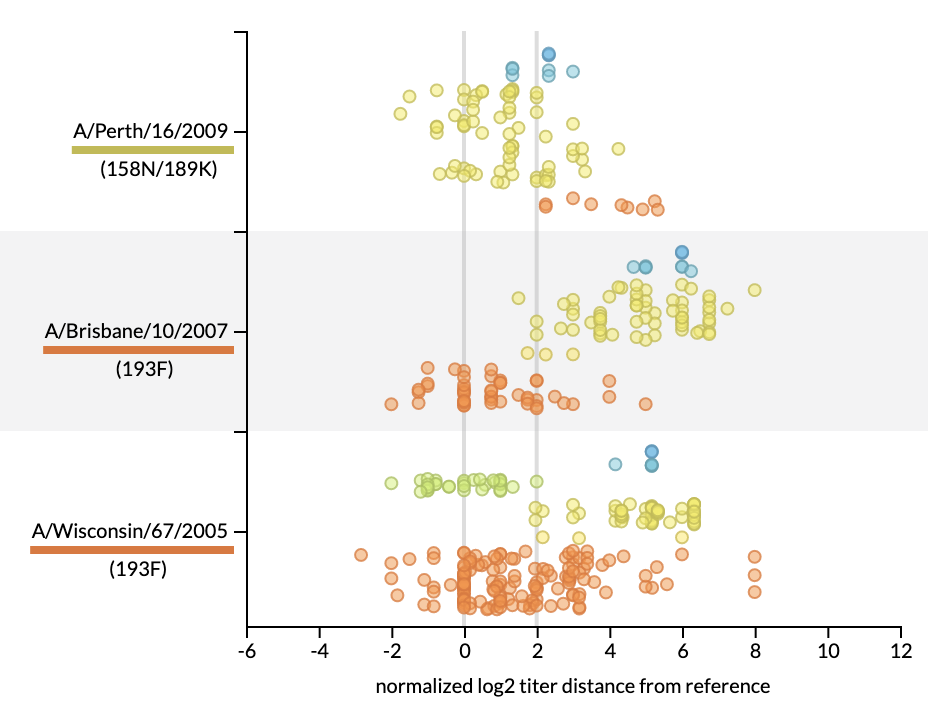
John Huddleston, Ph.D.
- Staff scientist in Trevor Bedford's lab
- Nextstrain developer
- Certified Carpentries instructor

Joint visualization of seasonal influenza serology and phylogeny to inform vaccine composition
22 Mar 2023
Seasonal influenza vaccines must be updated regularly to account for mutations that allow influenza viruses to escape our existing immunity. A successful vaccine should represent the genetic diversity of recently circulating viruses and induce antibodies that effectively prevent infection by those recent viruses. Thus, linking the genetic composition of circulating viruses and the serological experimental results measuring antibody efficacy is crucial to the vaccine design decision. Historically, genetic and serological data have been presented separately in the form of static visualizations of phylogenetic trees and tabular serological results to identify vaccine candidates. To simplify this decision-making process, we have created an interactive tool for visualizing serological data that has been integrated into Nextstrain’s real-time phylogenetic visualization framework, Auspice. We show how the combined interactive visualizations may be used by decision makers to explore the relationships between complex data sets for both prospective vaccine virus selection and retrospectively exploring the performance of vaccine viruses.
 @huddlej
@huddlej Google Scholar
Google Scholar mstdn.science/@huddlej
mstdn.science/@huddlej